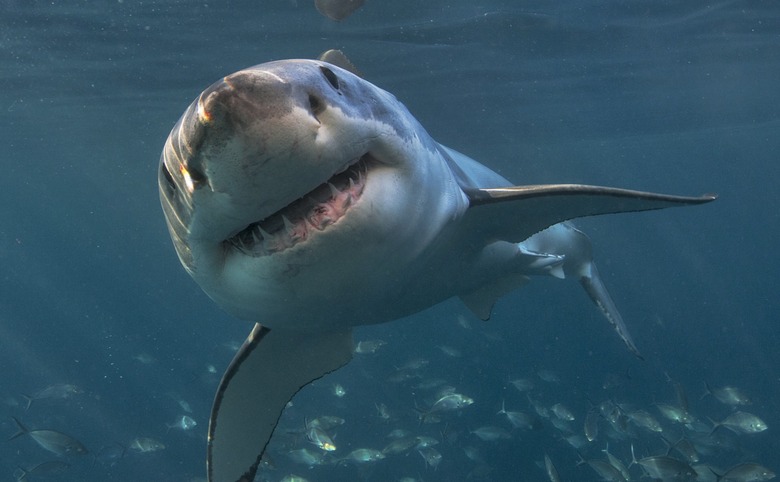Scientists Find Three Glow-In-The-Dark Sharks
When it comes to animal abilities that humans would love to have, being able to glow in the dark has to be near the top of the list, right beneath flight and, of course, turning your skin into camouflage like an octopus. Scientists know about plenty of animals with what is known as bioluminescence, including fireflies and many species of deep-sea fish. Now, they can add three more to their list.
In a new study published in the journal Frontiers in Marine Science, researchers studying deep-sea sharks reveal that three species of sharks found off the coast of New Zealand exhibit the ability to glow in the dark waters where they live. Being sharks, they're hunters but also potential prey for other species, so glowing in the dark might not seem like a very useful feature, but it actually is.
"Through a histological and pharmacological approach, the bioluminescence of three different shark species was investigated," the researchers write. "Our results support evolutive conservation of light organ morphology and luminescence control. For the first time, luminescence was recorded and analyzed for the largest luminous vertebrate, D. licha and two lanternsharks, E. lucifer and E. granulosus."
Many fish that live near the bottom of the ocean have glowing body parts that they use as lures to catch prey. Tiny dangling bits of glowing tissue belies the danger that the fish pose to their smaller prey, but the sharks in this study don't glow to draw attention, but rather to avoid it.
The sharks in the study, including the large kitefin shark which can grow up to six feet in length, reside in depths just on the border where light no longer penetrates. It's known as the "twilight zone," and when looking toward the surface from below, only a very small amount of light can usually be seen. The sharks take advantage of this in an incredible way.
The sharks don't glow uniformly across their entire bodies. Instead, the majority of the luminescence is isolated on the bellies of the animals. When viewed from below, against the dim backdrop of the surface, the sharks' glowing bellies allow them to essentially disappear. This is obviously advantageous when avoiding larger predators, but it's also a potential boon for hunting, as smaller fish may be caught unawares and have no idea that a shark is hovering nearby.
The discoveries described in the study are incredibly interesting, and the researchers have also broken new ground in the discovery of the bioluminescence of the kitefin shark. At a maximum length of around six feet, it's officially the largest species of glowing fish known to science.
It's often been said that we know about the surface of the Moon than what lies at the bottom of Earth's oceans, and with discoveries like this being made on a regular basis, it certainly seems true.
